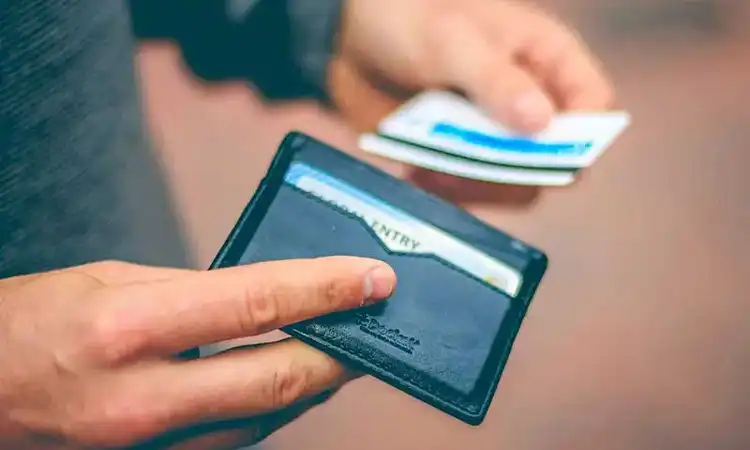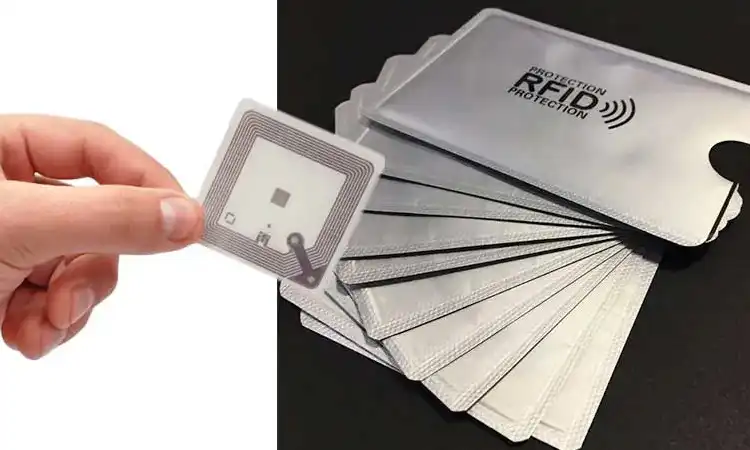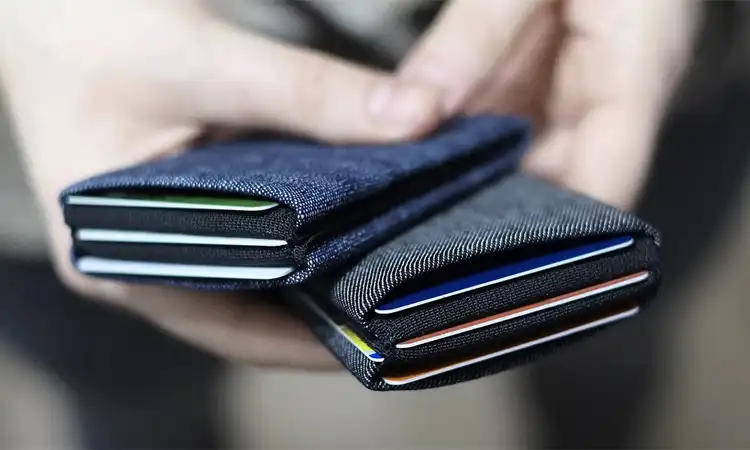The rise of contactless payment and identification methods has made our lives more convenient and opened up opportunities for identity theft. RFID blocking material has become a popular solution to this problem, but what exactly is it made of?
RFID Blocking Material Meaning
RFID blocking material is a type of technology designed to protect against unauthorized access to sensitive information. It creates a shield that blocks radio frequency signals, which RFID technology uses to transmit data wirelessly. These signals are commonly used in credit cards, passports, and other types of identification cards. RFID blocking materials can be made from various materials, such as aluminum, copper, nickel, and certain fabric types. These materials effectively block RF signals and can help prevent identity theft, which has become a growing concern in the age of digital technology. However, it’s important to note that RFID blocking materials can also have potential safety concerns, such as interfering with medical devices or disrupting communication systems. Therefore, it’s important to use RFID blocking materials cautiously and to ensure they are used appropriately.
What Common Materials can Block RFID?
There are a variety of materials that can be used to block RFID signals. Some of the most common materials include aluminum, copper, nickel, and certain fabric types.
- Aluminum-It is an effective material for blocking RFID signals because it is a good conductor of electricity. Aluminum foil can be used to create a DIY RFID blocking sleeve for credit cards, passports, and other types of identification cards. The aluminum foil’s thickness can impact the block’s effectiveness, with thicker foil providing better protection.
- Copper: Copper mesh or copper fabric can create RFID blocking sleeves and wallets. Copper is an excellent conductor of electricity and is often used in electronics for its conductivity.
- Nickel: Nickel-copper alloy, also known as Monel, is often used in RFID blocking wallets and sleeves. This material is known for its durability and effectiveness in blocking RF signals.
- Fabric: One popular type of fabric is RFID blocking nylon, made with a conductive layer of metal that blocks RF signals. RFID blocking fabric can also be made by adding a layer of copper or nickel to the fabric.
- Carbon Fiber and Conductive Inks: Carbon fiber is a lightweight and durable material used in many products. Including wallets and backpacks. Conductive inks are a type of ink that can be printed onto a variety of surfaces to create an RFID blocking layer.
It’s important to note that the effectiveness of these materials in blocking RFID signals can vary depending on various factors. Such as the material’s thickness and the RF signal’s strength. Therefore, it’s important to choose a material that has been tested and proven effective for RFID blocking. Additionally, it’s important to use RFID blocking materials appropriately and to avoid interfering with other types of technology.
Does RFID Block Material Work?
The effectiveness of RFID blocking material depends on a variety of factors. RFID blocking material can prevent unauthorized access to sensitive information when used correctly. However, the RFID signal’s strength and the blocking material’s quality can impact its effectiveness.
Research has shown that certain types of metal, such as aluminum, can block most RFID signals. However, RFID signals can be boosted with special equipment, which means that even high-quality blocking materials may not always be 100% effective. In addition, the design of the RFID blocking product can impact its effectiveness.
For example, if a wallet only partially covers a card or passport, it may not provide full protection against RFID scanning. Similarly, if the RFID blocking material is damaged or worn, it may not work as effectively.
Despite these limitations, many people still use RFID blocking materials to protect their personal information. While the effectiveness of RFID blocking material may not be guaranteed, it can protect against identity theft and other forms of digital fraud.
Is RFID Blocking Material Safe?
RFID blocking material is generally considered safe for everyday use. The materials used to create RFID blocking products are not harmful to humans and do not pose any significant health risks.
However, there have been some concerns about the impact of RFID blocking material on wireless signals, such as those used by cell phones or Wi-Fi networks. Some studies have suggested that RFID blocking products can interfere with wireless signals and reduce their strength.
It’s important to note that the impact of RFID blocking material on wireless signals is minimal and unlikely to cause significant issues for most people. However, if you are concerned about the potential impact on wireless signals, it’s best to choose a high-quality RFID blocking product that has been tested for interference.
RFID blocking material is a safe and effective way to protect your personal information from unauthorized access. It is commonly used in wallets, passport covers, and other types of products to prevent identity theft and other forms of digital fraud.
RFID Blocking Material for Wallets

RFID blocking material is commonly used in wallets to protect credit cards, IDs, and other sensitive information. Wallets made with RFID blocking material have a metal or conductive fabric layer preventing RFID signals from passing through.
The most common materials used in RFID blocking wallets are metals like aluminum or copper, which effectively block most RFID signals. Carbon fiber is another popular choice, as it is a lightweight and durable material that can block RFID signals.
In addition to the blocking material itself, the wallet’s design can also impact its effectiveness. A high-quality RFID blocking wallet should fully cover credit cards and other sensitive information to provide maximum protection.
Many different types of RFID blocking wallets are available on the market, from slim, minimalist designs to larger, multi-compartment wallets. When choosing an RFID blocking wallet, selecting a high-quality product that has been tested for effectiveness and is designed to meet your specific needs is important.
Why do You Need RFID Blocking Wallet?
Using an RFID blocking wallet can provide an extra layer of protection against digital fraud and identity theft. RFID chips are found in many credit cards and passports, and criminals with special equipment can scan these chips.
Using an RFID blocking wallet can prevent unauthorized access to your personal information and keep your identity safe. This is especially important when traveling, as RFID skimming is a common tactic used by thieves at airports and other public places.
With an RFID blocking wallet, you can have peace of mind knowing that your credit card information and other personal details are secure. These affordable and widely available wallets make them a practical and effective way to protect yourself against digital fraud.
How do I Know If My Wallet is RFID Blocking?
There are a few ways to determine if your wallet is RFID blocking:
- Check for a label or tag on the wallet that indicates it is RFID blocking. Many manufacturers will include this information on the packaging or product description.
- Test your wallet using an RFID scanner. Simply place your credit card or other identification in the wallet and scan it with an RFID reader. If the reader cannot detect the signal from the card, the wallet is likely RFID blocking.
- Test your wallet is to try using your credit card at a contactless payment terminal. If the transaction is not completed, it may be a sign that the card cannot send the signal through the wallet.
If you’re still unsure whether your wallet is RFID blocking, you can consult the manufacturer or contact customer support for more information. Choosing a high-quality RFID blocking wallet is important to ensure your personal information is fully protected.
RFID Blocking Material for Sale

RFID blocking materials are widely available for sale online and in stores. These materials come in various forms, including rolls of film, fabric, and pre-made sleeves and wallets. Prices vary depending on the type and quantity of material, but they generally range from a few dollars to several hundred dollars.
What is the Price of RFID Blocking Material?
The price of RFID blocking material can vary depending on your purchase type and quantity.
For example, a roll of RFID blocking fabric can cost anywhere from $10 to $50, while a pack of RFID blocking sleeves can range from $5 to $20.
Some companies also offer RFID blocking adhesive tape, which can cost around $20 per roll.
It’s important to note that while price can be a consideration, it’s also important to choose high-quality RFID blocking material to ensure effective protection against RFID skimming.
Additionally, some RFID blocking materials may be more expensive than others due to the materials used or the manufacturing process, so it’s important to research and read product reviews before purchasing.
RFID Blocking Material Where to Buy
RFID blocking material can be purchased from various sources, both online and in physical stores.
Online retailers like Amazon, eBay, and Etsy offer a wide selection of RFID blocking materials, including sleeves, wallets, and fabric.
Specialty RFID blocking companies like Silent Pocket and RFID Wallet also offer high-quality products, including backpacks, purses, and travel gear.
In addition, many department stores and travel stores now offer RFID blocking products, such as luggage tags and passport holders.
When shopping for RFID blocking material, it is important to research and chooses a reputable seller to ensure that you receive high-quality material that will effectively protect your personal information.
Best RFID Blocking Material
Many different types of RFID blocking materials are available, each with its own benefits and drawbacks. Some of the most popular materials include copper, aluminum, nickel, and silver, as well as various types of fabric and mesh. The best RFID blocking material for you will depend on your specific needs and preferences.
For example, fabric and mesh materials may be the best choice if you are looking for a lightweight and flexible option. On the other hand, if you are looking for a more heavy-duty option, metal-based materials like aluminum and copper may be a better fit.
DIY RFID Blocking Material
Can I Make My Own RFID Blocker?
Making your own RFID blocking material can be a cost-effective and fun DIY project:
- You can use aluminum foil or duct tape to create a barrier for RFID signals. Simply wrap your credit cards, passport, or other personal identification in foil or tape, covering all sides.
- You can use copper-infused fabric, available at fabric stores and online retailers. Cut the fabric to the desired size and create a sleeve or wallet for your cards and other items.
- Signal-blocking Faraday and carbon fiber fabric can also be purchased online to create your own RFID blocking gear.
When creating your own RFID blocking material, You need to consider:
- The material covers the items you want to protect, and there are no gaps or holes where RFID signals can get through.
- While DIY RFID blocking material can be effective, it may not provide the same level of protection as professionally made products.
- If you’re interested in making your own RFID blocking material, be sure to do your research and choose the best materials for your needs.
More about RFID Blocking FAQs
-
What is RFID blocking material, and how does it work?
RFID blocking material is a type of material that is designed to block or interfere with radio frequency signals used in RFID technology. RFID blocking material works by using conductive or shielding materials to create a barrier that prevents RFID signals from being transmitted or received.
-
What are the benefits of using RFID blocking material?
The benefits of using RFID blocking material include protecting against RFID skimming. It is a type of electronic theft in which criminals intercept RFID signals to steal sensitive information such as credit card numbers or personal identification data.
-
What are the different types of RFID blocking material, and how do they differ?
The most common types of RFID blocking material include metal mesh fabrics, conductive textiles, and metalized films. These materials differ in composition, thickness, flexibility, and durability and are designed for different applications.
-
What are some common applications for RFID blocking material?
Common applications for RFID blocking material include credit card sleeves, passport covers, wallets, bags, and RFID blocking fabric for clothing and accessories.
-
How do you test the effectiveness of RFID blocking material?
The effectiveness of RFID blocking material can be tested using various methods, including using an RFID reader to test the material’s ability to block or interfere with RFID signals.
-
Can RFID blocking material interfere with other electronics or devices?
RFID blocking material can potentially interfere with other electronics or devices that use radio frequency signals, such as Wi-Fi or cellular networks. However, most RFID blocking materials are designed to block specific frequencies used in RFID technology without affecting other signals.
-
How long does RFID blocking material last, and when should it be replaced?
The lifespan of RFID blocking material depends on factors such as the type of material, the frequency of use, and the conditions in which it is used. RFID blocking material can generally last several years with proper care and maintenance.










